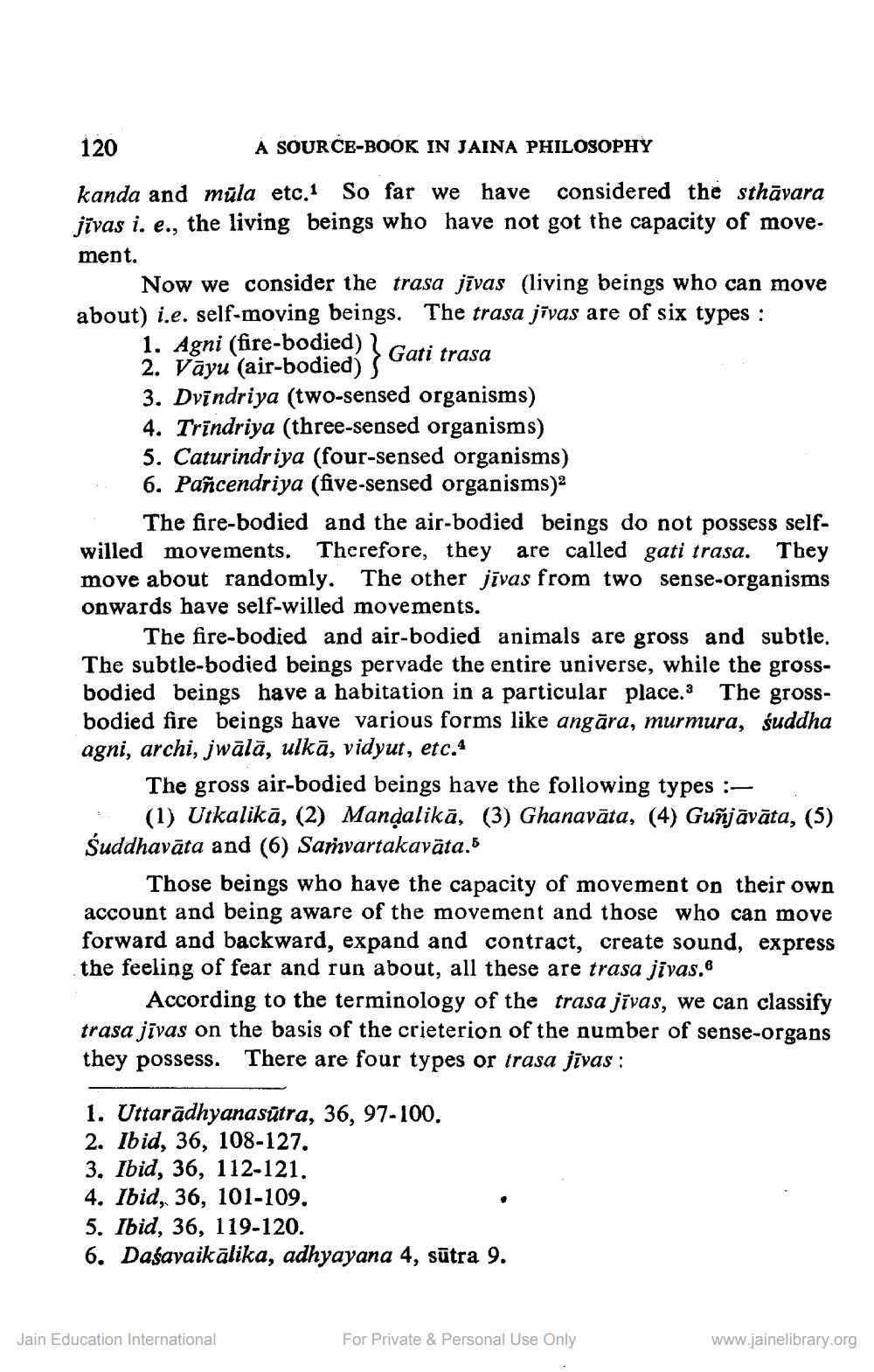________________
120
À SOURCE-BOOK IN JAINA PHILOSOPHY kanda and mūla etc. So far we have considered the sthāvara jīvas i. e., the living beings who have not got the capacity of move. ment.
Now we consider the trasa jīvas (living beings who can move about) i.e. self-moving beings. The trasa jīvas are of six types : 1. Agni (fire-bodied) .
ti trasa 2. Vāyu (air-bodied) " 3. Dvīndriya (two-sensed organisms) 4. Trindriya (three-sensed organisms) 5. Caturindriya (four-sensed organisms) 6. Pañcendriya (five-sensed organisms)
The fire-bodied and the air-bodied beings do not possess selfwilled movements. Therefore, they are called gati trasa. They move about randomly. The other jīvas from two sense-organisms onwards have self-willed movements.
The fire-bodied and air-bodied animals are gross and subtle. The subtle-bodied beings pervade the entire universe, while the grossbodied beings have a habitation in a particular place. The grossbodied fire beings have various forms like angāra, murmura, suddha agni, archi, jwālā, ulkā, vidyut, etc.4
The gross air-bodied beings have the following types :
(1) Utkalikā, (2) Mandalikā, (3) Ghanavāta, (4) Guñjāvāta, (5) Suddhavāta and (6) Sarvartakavāta.5
Those beings who have the capacity of movement on their own account and being aware of the movement and those who can move forward and backward, expand and contract, create sound, express the feeling of fear and run about, all these are trasa jivas.
According to the terminology of the trasa jīvas, we can classify trasa jīvas on the basis of the crieterion of the number of sense-organs they possess. There are four types or trasa jīvas :
1. Uttarādhyanasūtra, 36, 97-100. 2. Ibid, 36, 108-127. 3. Ibid, 36, 112-121. 4. Ibid, 36, 101-109. 5. Ibid, 36, 119-120. 6. Daśavaikālika, adhyayana 4, sūtra 9.
Jain Education International
For Private & Personal Use Only
www.jainelibrary.org




